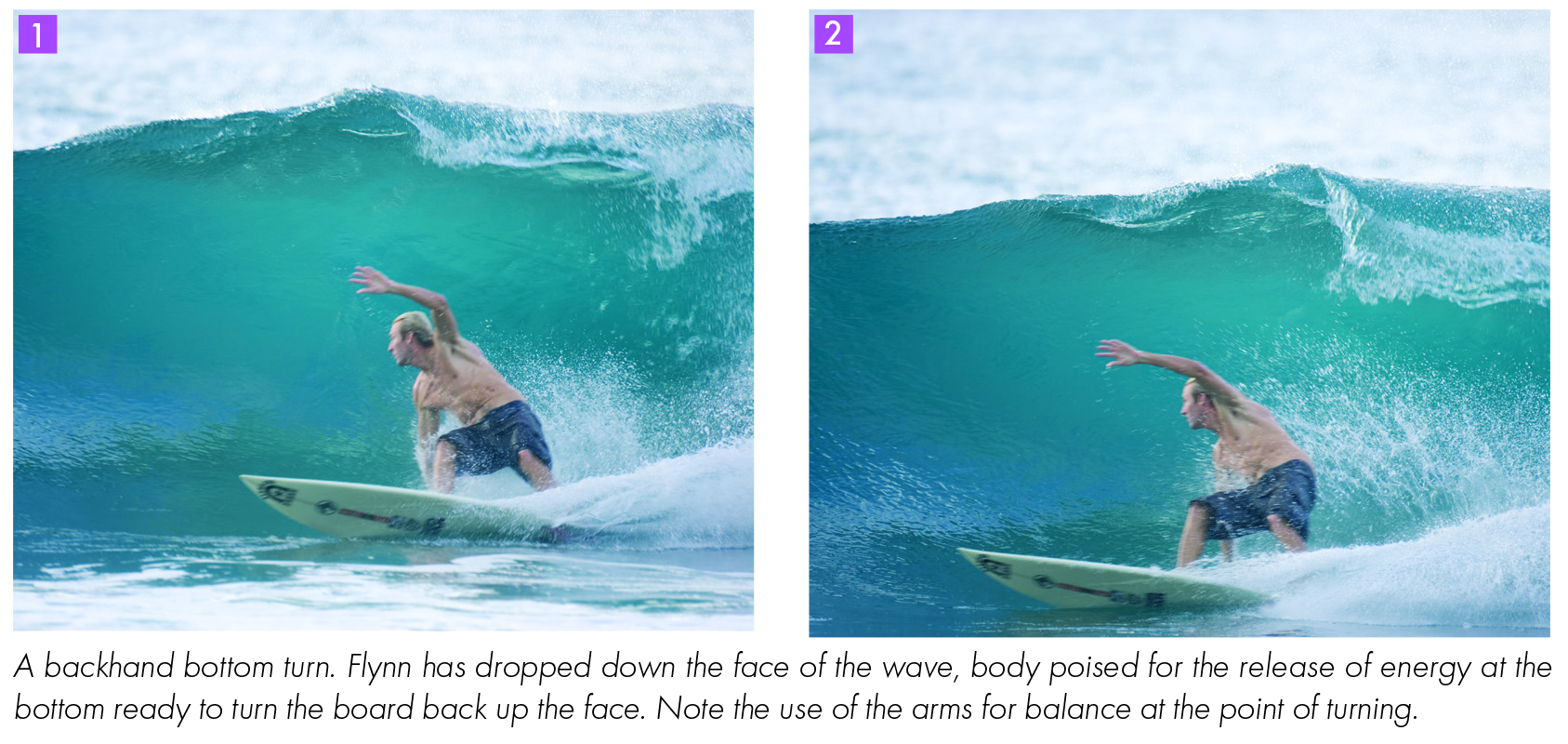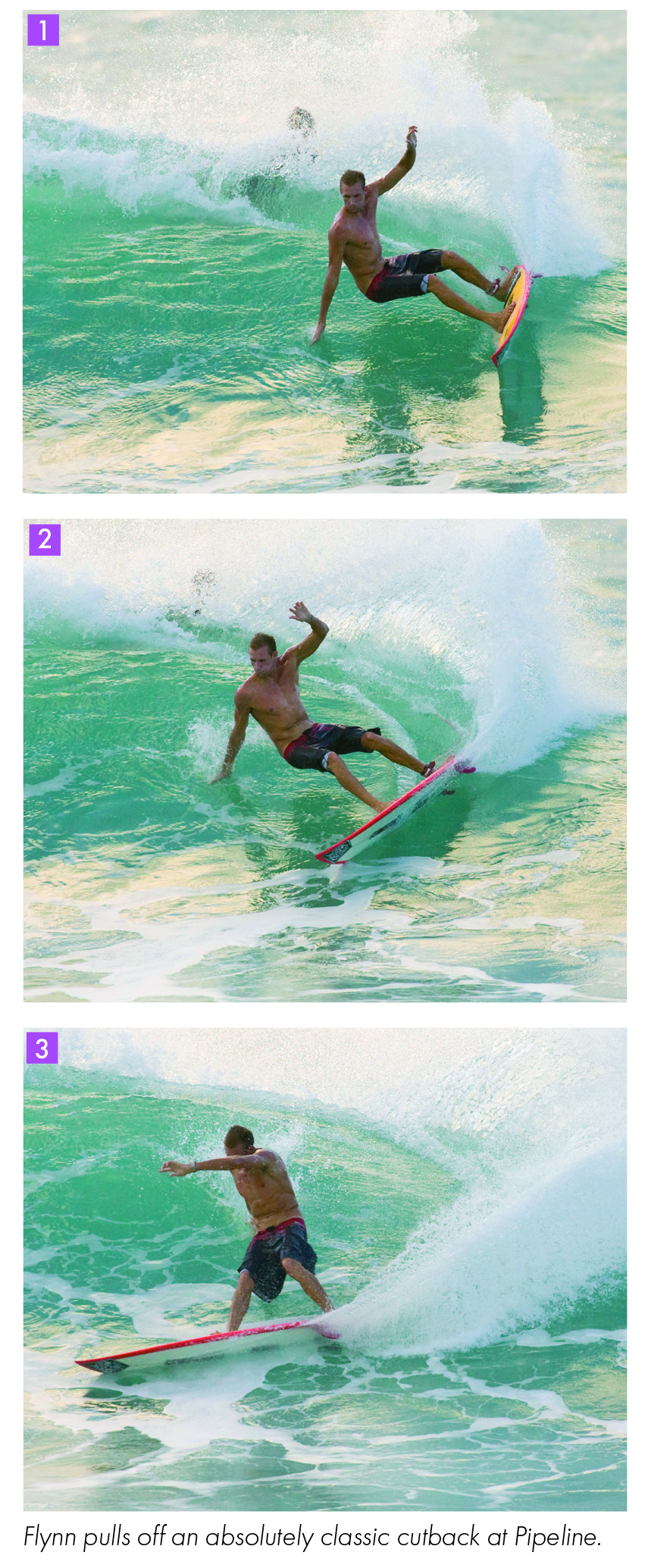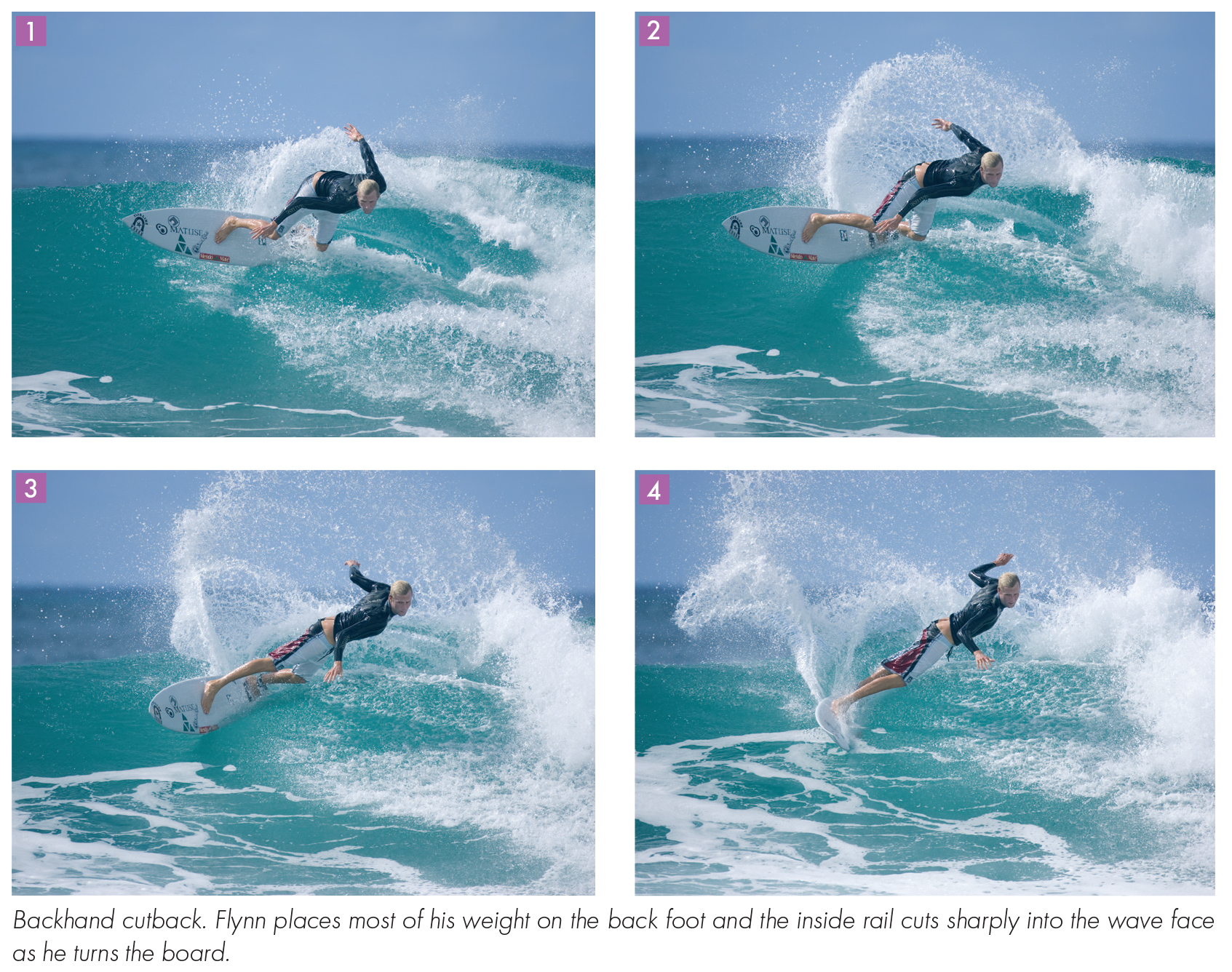Surfing: The Bottom Turn
Book Extract
Forehand Bottom Turn
Paddle for the wave. As it picks you up, get to your feet as quickly as you can, then ride the board straight down the face of the wave. At the bottom of the wave push down with your feet and body weight onto the inside rail, with more pressure on your back foot so the tail and fins are also cutting into the wave at the same time as the inside rail. Guide the board round until you’re either heading back up to the lip or have straightened out ready to trim along the face. Your body should move smoothly so that at the bottom of the wave your legs are bent, storing energy like a spring that is then released smoothly but quickly to direct the board along the arc of the turn. If you try to ‘throw’ your body and board into the turn you’ll more than likely fall off.

Backhand Bottom Turn
This is more difficult than a forehand turn. Many people also find it harder to lean into a turn on their backhand than their forehand. Despite this, the manoeuvre is essentially the same as a forehand bottom turn.
Take off straight down the wave, bend your knees and lean into the turn with your weight on the tail and inside rail and guide the board round ready for your next move. You should have your feet almost parallel for this move, and your bodyweight needs to be angled back towards the face of the wave.
Two things to remember: If you put too much weight on your inside rail and / or tail the board may stall, making it difficult to regain enough speed to stay on the clean face of the wave – or you may even wipe out. If you put too little weight on the inside rail and / or tail the board won’t respond enough to get you round the arc of your turn before the lip lands on top of you.

THE CUTBACK
Once you’ve mastered these manoeuvres you’ll eventually need to learn how to do a cutback. This is used to get you back towards the pocket of the wave, where the power centre is, from out on the face where power is diminished. It’s a tricky manoeuvre that involves the essentials of forehand and backhand turns and until you have these mastered you’ll have problems with effective cutbacks.

Forehand Cutback
Although a cutback is an excellent way to get back to the most powerful part of the wave, timing and positioning are highly important when going for it. If you cutback too soon you may get caught by the white water of the breaking wave; if you do it from too far out on the face you may not have enough speed and power to get the board all the way round, resulting in a stall.
Once you’re out on the face of the wave, take the board as high up the face as you can before transferring your weight to the outside rail. Twist your head and upper body round towards the direction in which you aim to go, which is back towards the curl, then put your weight on to your back foot and guide the board round so you are now riding backhand towards the approaching white water. Use your arms for balance throughout the manoeuvre.
Before you hit the white water, start to angle the board around and back in the direction you’ve just come from. This means once again putting weight on the outside rail and the tail, and weighting your upper body much as if you were doing a forehand bottom turn. Use your back foot to pivot on, turning the tail under this pivot. If you get it right the board will turn as it becomes immersed in white water (or just before), and you’ll find yourself back in the most powerful part of the wave.
For something that’s supposed to be a ‘basic’ manoeuvre, a cutback isn’t especially easy. This is because it’s a relatively drawn-out manoeuvre combining two distinct moves performed so that they essentially flow one into the other. As a beginner you’ll probably find it difficult enough performing one manoeuvre at a time, without going for two together. Practise initially by trying gentle turns, and accept that you may get bogged down in white water or stall way out on the face. With practice you’ll get there eventually and once you get your cutbacks wired you can make much more of a wave.
Backhand Cutback
In some ways this is easier than a forehand cutback as, once you turn back towards the white water, you can see the wave easily – on a forehand cutback it’s more difficult to see what the wave is doing after your first turn.
Once again, get as high up the wave as you can. Then place your weight towards the outside rail and tail, pivoting round on the tail so the board arcs around to face the breaking wave. Now you can see the face of the wave – try to keep your head up – there can be a tendency to look down towards the bottom of the wave as you turn the board.

© Not to be reproduced without written permission from Fernhurst Books Limited.
Surfing: A Beginner’s Guide is written by Alf Alderson. Alf is an award-winning freelance journalist and photographer who splits his time between the Pembrokeshire coast and the French Alps. He specialises in adventure sports and travel journalism, and his writing has appeared in a wide range of publications and websites including The Guardian, Daily Telegraph, Independent, Toronto Globe & Mail, South China Morning Post, Financial Times, Abu Dhabi National, Coast Magazine and a wide range of surfing and skiing magazines and websites. With four decades of surfing behind him in almost every corner of the globe, Alf is a regular fount of knowledge for all things surfing.